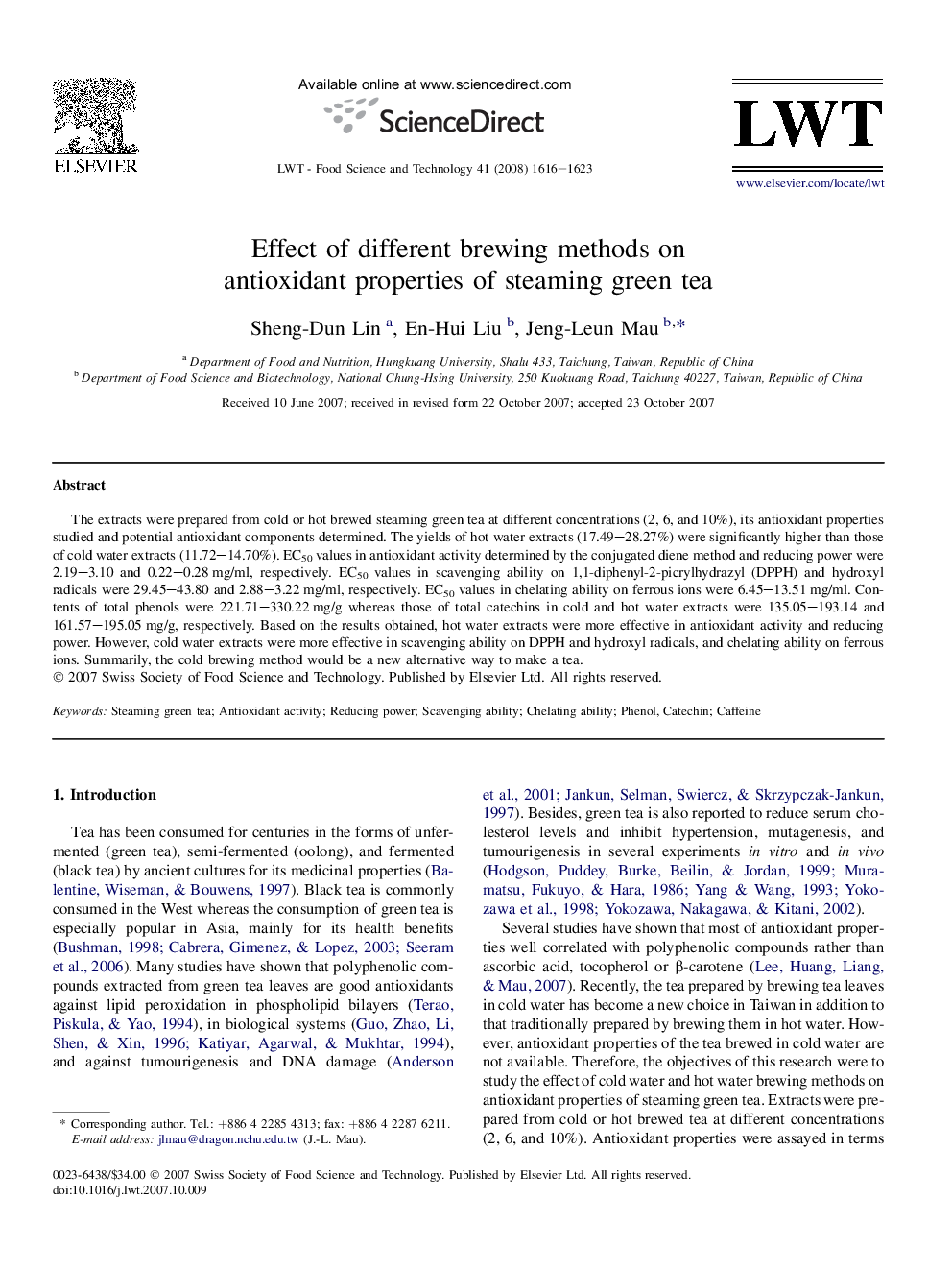| Article ID | Journal | Published Year | Pages | File Type |
|---|---|---|---|---|
| 4564731 | LWT - Food Science and Technology | 2008 | 8 Pages |
The extracts were prepared from cold or hot brewed steaming green tea at different concentrations (2, 6, and 10%), its antioxidant properties studied and potential antioxidant components determined. The yields of hot water extracts (17.49–28.27%) were significantly higher than those of cold water extracts (11.72–14.70%). EC50 values in antioxidant activity determined by the conjugated diene method and reducing power were 2.19–3.10 and 0.22–0.28 mg/ml, respectively. EC50 values in scavenging ability on 1,1-diphenyl-2-picrylhydrazyl (DPPH) and hydroxyl radicals were 29.45–43.80 and 2.88–3.22 mg/ml, respectively. EC50 values in chelating ability on ferrous ions were 6.45–13.51 mg/ml. Contents of total phenols were 221.71–330.22 mg/g whereas those of total catechins in cold and hot water extracts were 135.05–193.14 and 161.57–195.05 mg/g, respectively. Based on the results obtained, hot water extracts were more effective in antioxidant activity and reducing power. However, cold water extracts were more effective in scavenging ability on DPPH and hydroxyl radicals, and chelating ability on ferrous ions. Summarily, the cold brewing method would be a new alternative way to make a tea.
